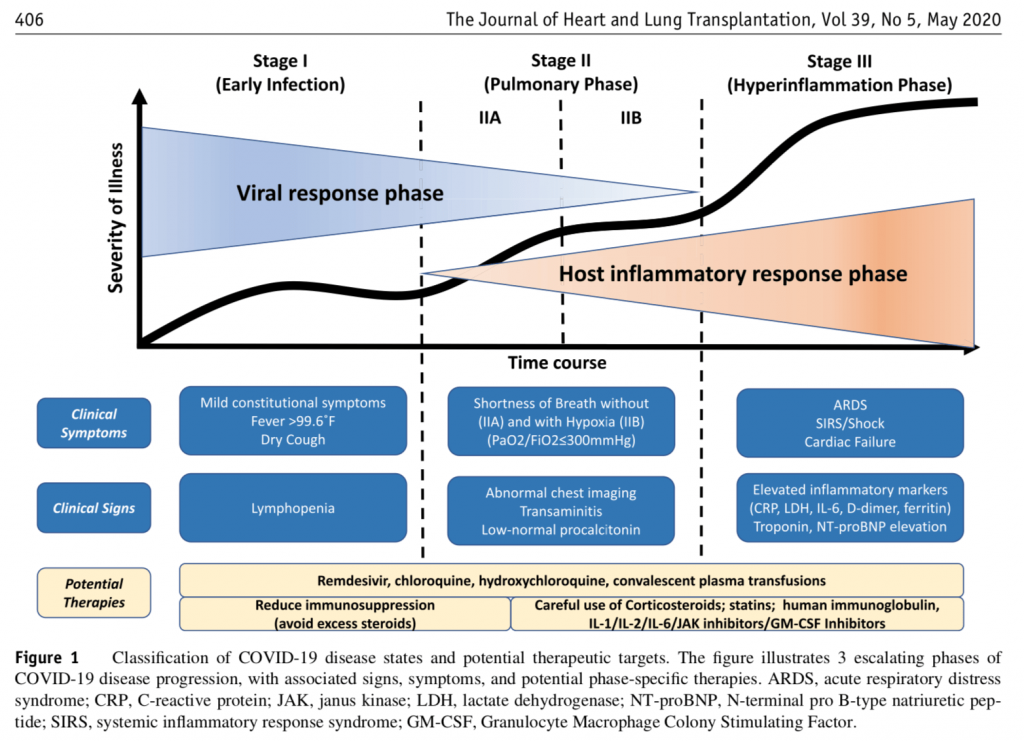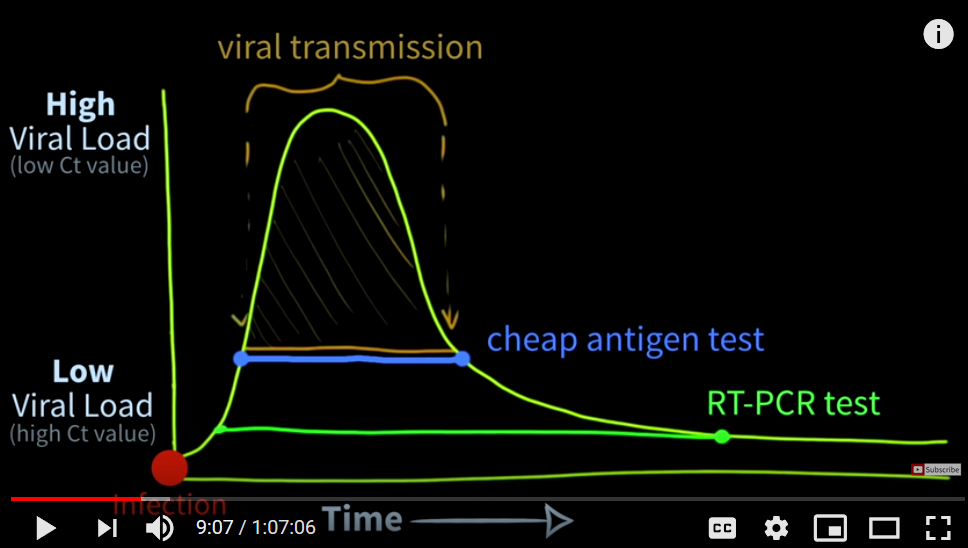As a FYI, we need to understand the pattern of such diseases, so courtesy Yandex Image search (Google did an obvious results suppression):

This leads to the simplified U/L trajectory description. If a vulnerable patient catches, things tend to get worse over several days, potentially leading to a crisis from immunity system over-reaction and/or secondary infection (“complications”). That can lead to flat-lining, the L, death. But if one makes it through the trough, a recovery period extends the disease process, the U trajectory. BTW, to see the U/L, invert the black line that rises with severity on the chart. Shouldn’t a deterioration lead to sinking?
U/D, HT Jerry and MedCram/Mina: Let’s look at a plot of viral load vs time [refining the viral phase triangle] and sensitivity of tests vs threshold where patients are infectious:

The chart shows that the viral phase comes early, and leads to onward phases, which would be where flat-lining vs recovery happens. An effective antiviral would reduce rate of descent, giving time for the normal immune response to trigger a recovery without life threatening crisis.
Of course, a bad sign of going towards crisis is needing to be hospitalised. Hence the problem that antivirals will tend to have reduced effect on the hospitalised. As the chart suggests. Of course, by the time one is in ICU and/or on a ventilator, one is in serious trouble.
Therefore, signs of an effective antiviral will be reduced hospitalisation in vulnerable population segments (co-morbidities, age, reduced immune system effectiveness etc). As a result, too, reduced death rates. This would be due to suppressing the viral cell-hijack replication cycle.
A mechanism proposed for Covid-19, has been propping open cell pores allowing higher Zn concentration. Where, there seems to be a reasonable body of evidence that Zn is able to suppress that replication. Similarly, pH shifts may derange key-lock fitting for target points for corona viruses. At least one mentioned drug, Azithro, may be destroying receptor cells, which are tied to senescence. Obviously, there is much more out there.
So, let us attend to the trajectory. END